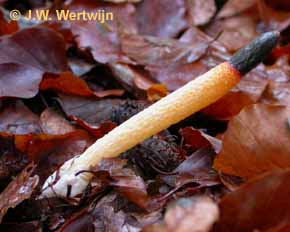
Foto:
21 nov. 2004
Monnikenberg (de Stad Gods)
Hilversum |
Dog's stinkhorn
(Mutinus caninus)
NMV Ga 219010
|
Stinkhorns are stomach fungi, with very different look and feel, compared to earthstars, earthballs or puffballs.
These species propagate in two ways: by spore and by mycelium.
All in the Netherlands known species with a phalloid-shape start with an egg-shape.
They are comencing as a (generally) white, silky egg-like structure full of yelly in which is embedded
a conical cap attached only at its apex to a cylindrical white spongy, hollow stem (the so called receptacle).
During growth the egg breaks open. From thre the stem is erecting with on top a slimy spore-mass.
The spore-mass on top is olive-green or brownish, and has a strong smell. Flies like the smell, are landing on it,
and transporting the spores at their feet to different areas.
Mutinus species have little eggs (1-2 cm in diameter).
In the Netherlands there are tree Mutinus species:
de Dog's stinkhorn (Mutinus caninus),
de Tapered stinkhorn(Mutinus elegans),
and the
Rosy stinkhorn (Mutinus ravenellii).
There is some resemblance with
Common stinkhorn (Phallus impudicus).
|
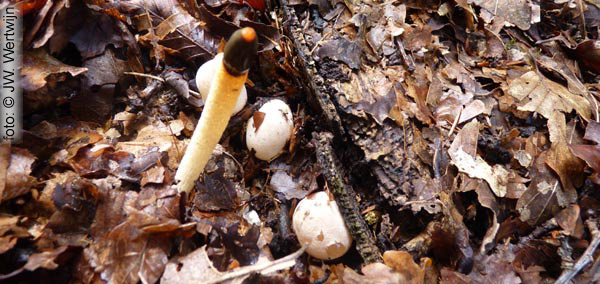
Photo: Dog's stinkhorn, Hilverbeek, september, 18 2010
|
 |
Regional:
Two Mutinus species can be found in the Amsterdam area (het Gooi, Amsterdamse bos).
Henk van Halm, in Rob Chrispijn e.a., Champignons in de Jordaan (1999), p. 164-165,
reports both species in the Amsterdam Area.
Rosy stinkhorn at shredded wood (on sand), and Dog's stinkhorn on mud (peat).
Dog's stinkhorn is mostly found in the Amsterdam forest (beech).
During a guided tour in 2011 in Gaasperpark (Amsterdam), suddenly here was one,
a Dog's stinkhorn, in the solely beech avenue there is over there.
|
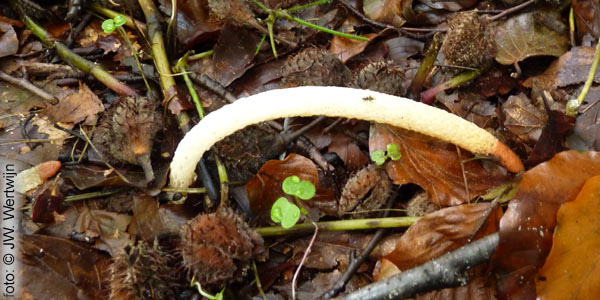
Photo: Dog's stinkhorn, Gaasperpark, oktober, 13-16 2011 |
 |
I learned Dog's stinkhorn in 2000, from a mycologist who called this sixth finger
Hondenlulletje (which means dog's cocky), a literal translation of 'caninus'.
|
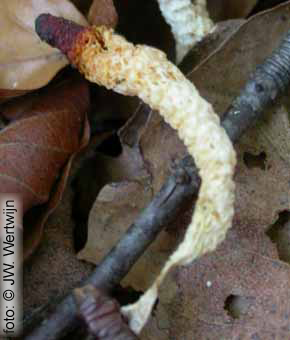
Photo:
Zwaluwenberg
Hollandsche Rading
Oktober, 11. 2004 |
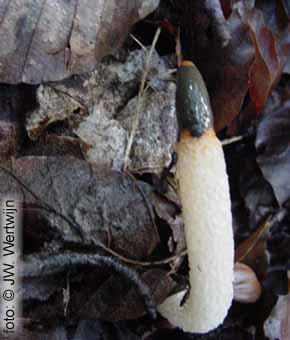
Photo:
Tenkinkbos
Winterswijk
Oktober, 9 2000 |
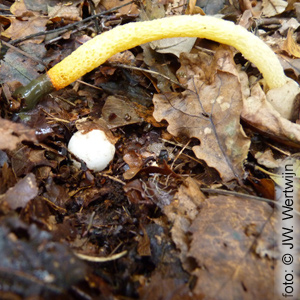
Photo:
Bussums Bloei
Nwe 's Gravelandse weg
Oktober 26 2010 |
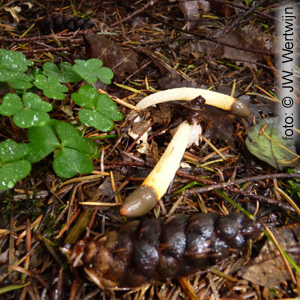
Photo:
Landgoed Twickel
Delden
Oktober, 2 2010 |
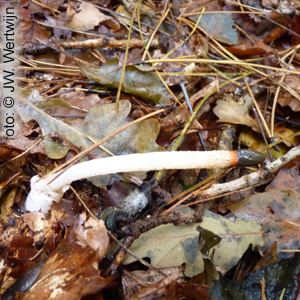
Photo:
Spanderswoud
Bussummergrindweg
Oktober, 9 2011 |
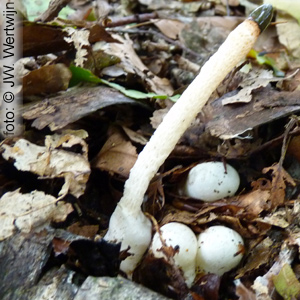
Photo:
Dassenveld
Hollandsche Rading
September, 15 2011 |
Literature:
Rob Chrispijn e.a., Champignons in de Jordaan (De paddenstoelen van Amsterdam), Schuyt en Co, 1999, p.164-165.
Ewald Gerhardt, De grote Paddenstoelengids(voor onderweg), Tirion natuur, 2006,p. 618-621.
Roger Philips Paddestoelen van West-Europa, Spectrum, 2000, p. 257.
Hans Vermeulen, Paddestoelen, Schimmels en Slijmzwammen van Vlaanderen (determinatiesleutels aan de hand van kenmerken), De Wielewaal, Turnhout, 1999, p. 535
|
Top
|